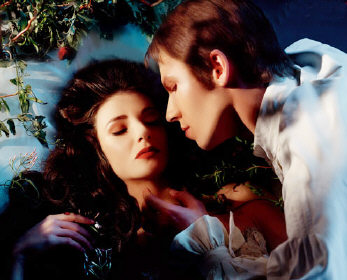Sleeping Beauty: Something Old, Something New, Something Borrowed...
England’s Royal Ballet is celebrating its 75th anniversary in style. The company’s birthday present is a new production of Sleeping Beauty. Created in 1890 by two geniuses – Russian composer Piotr Ilych Tchaikovsky and French choreographer Marius Petipa, this ballet has an important place in the Royal Ballet’s history.
 On February 20, 1946, the Sadler’s Wells Ballet (the former name of the Royal Ballet before it acquired the Royal Charter in 1956) reopened London’s Royal Opera House with Sleeping Beauty. Nineteen-year-old prima ballerina Margot Fonteyn danced Princess Aurora in front of the Royal Family and ordinary citizens of England in a new production created by the company’s founder Ninnete de Valois and Russian émigré Nicolas Sergeyev (who managed to rescue from Bolshevik Russia original notes of Petipa’s choreography.) This grand and lavish ballet designed by Oliver Messel meant a lot for a nation exhausted by six years of war. It was a symbol of a revival and a new life. Three years later, the young British troupe took Sleeping Beauty on its first tour to America. The overwhelming success of the ballet brought the company immediate acclaim and made Margot Fonteyn an international star. This Royal Beauty for years defined the ultimate classicism in ballet.
On February 20, 1946, the Sadler’s Wells Ballet (the former name of the Royal Ballet before it acquired the Royal Charter in 1956) reopened London’s Royal Opera House with Sleeping Beauty. Nineteen-year-old prima ballerina Margot Fonteyn danced Princess Aurora in front of the Royal Family and ordinary citizens of England in a new production created by the company’s founder Ninnete de Valois and Russian émigré Nicolas Sergeyev (who managed to rescue from Bolshevik Russia original notes of Petipa’s choreography.) This grand and lavish ballet designed by Oliver Messel meant a lot for a nation exhausted by six years of war. It was a symbol of a revival and a new life. Three years later, the young British troupe took Sleeping Beauty on its first tour to America. The overwhelming success of the ballet brought the company immediate acclaim and made Margot Fonteyn an international star. This Royal Beauty for years defined the ultimate classicism in ballet.
In 1994 and 2003 the company made two unsuccessful efforts to recreate the famous ballet. Both productions were flawed and therefore short-lived. This spring, in a third attempt, the Royal Ballet shows off its new Beauty. On May 15 London’s Covent Garden raised its curtain to a revival of the 1946 production of this timeless Russian classic. Artistic Director Monica Masson chose to go back to the company’s first staging and give it a modern facelift. Dance designer Peter Farmer recreated Oliver Messel’s original decorations. He completely revamped almost all 400 costumes and sets for Act II. The choreography of the new production is based on Petipa’s score, with additional dances created by De Valois, Frederick Ashton, and Christopher Wheeldon.
Critics have agreed that the new Royal Beauty was awoken with a triumph. The Times was “happy to report that the magic is back. This new production is an enchanting fairytale fantasy, a shining beacon for classicism that restores Beauty to its rightful place at the heart of the repertoire… The choreography … wears its Russian heritage with pride: exquisitely positioned, handsomely grand and filled with bursts of virtuosic sparkle. Tchaikovsky's score, under Valery Ovsyanikov's exciting conducting, soars.” (Debra Crane, The Sleeping Beauty, May 17)
“The dancing... on Monday night was superb,” wrote The Guardian. “Laura Morera, Lauren Cuthbertson and Marianela Nunez were crisply witty and luscious Fairies, while Alina Cojocaru and Johan Kobborg made you believe in the divine right of ballet royalty.” (Judith Mackrell, Sleeping Beauty, May 17)
It was a safe bet to restore and polish a masterpiece so it would shine and be an eye-pleaser. Lessons were learned from costly mistakes made in two previous productions. This time, the company’s management opted for “Better safe than sorry” staging. One could argue that choosing the old familiar path is an ultimate sacrifice of innovation and artistic aspiration for the cozy safety of tried and true. And I agree with that. At the same time I do believe that ‘digitally remastered’ classics will always find their grateful audience.
The first performance of Sleeping Beauty at the Kennedy Center’s Opera House is on June 22 at 7:30 pm, with Alina Cojocaru as Princess Aurora and Johan Kobborg as Prince Florimund.





